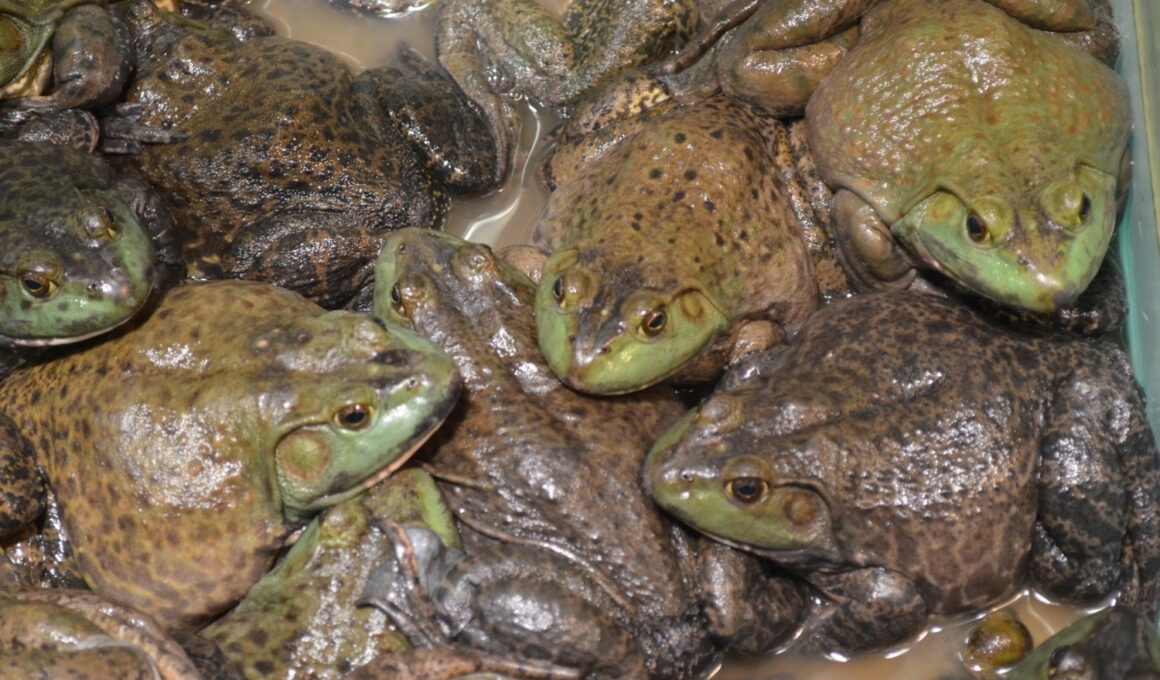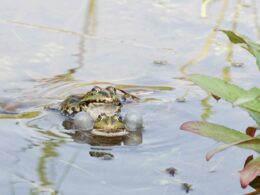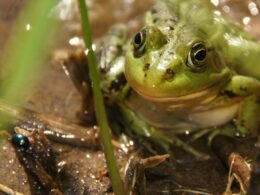In this article Show
If you often spend your weekends diving into the fascinating world of reptiles, you’ll understand the allure of the Pacman frog.
These colorful, uniquely shaped amphibians have been steadily gaining popularity as household pets, and it’s easy to see why.
But a pressing question I often encounter is, “Can Pacman frogs live together?” It’s a valid inquiry, given that many of us dream of having a lively tank with multiple frogs hopping around.
Well, let’s delve deep and uncover the truth behind this frequently asked question. Whether you’re a seasoned Pacman frog owner or a curious newbie, this is for you!
Quick Answer
No, Pacman frogs should not live together. These solitary amphibians exhibit territorial and sometimes cannibalistic behaviors, making cohabitation risky. For their well-being, it’s best to house them in separate enclosures, ensuring their health, safety, and longevity.
The Solitary Nature of Pacman Frogs
As one delves deeper into the world of Pacman frogs, a consistent theme emerges their inherent solitary nature. These frogs are not just introverts in the amphibian world; they are territorial beings that can be quite assertive about their space.
Territorial Tendencies
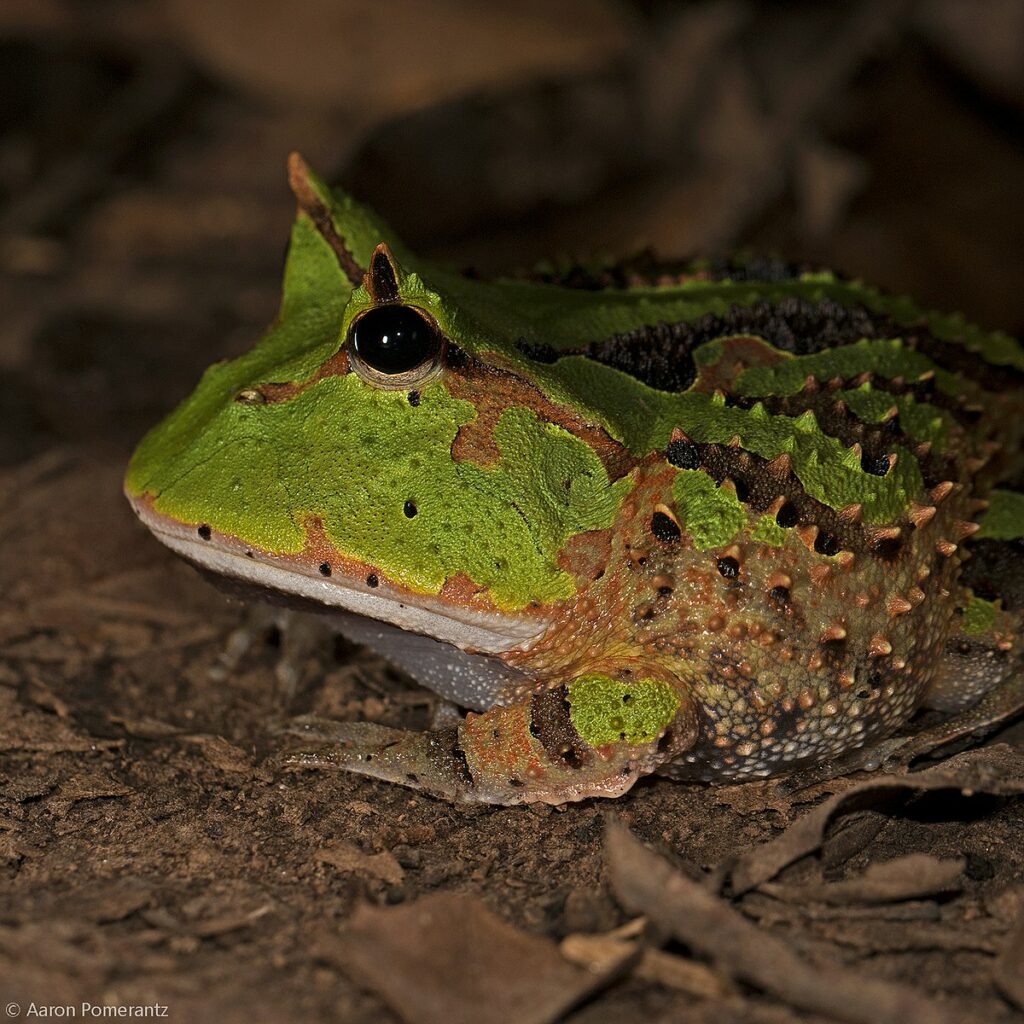
Pacman frogs, unlike some other amphibian species, are territorial right from their juvenile stages. In the wild, they’ve been observed staking out their patch of land and defending it from intruders.
This behavior is primarily driven by their instinct to secure a steady food source and to ensure their safety. In a contained space like a terrarium, this territoriality becomes even more pronounced.
The limited area makes them more likely to perceive other frogs as threats, even if there’s ample food available.
Aggressive Anecdotes
Many Pacman frog owners have shared stories of their attempts to house these frogs together, only to discover the hard way about their aggressive behavior. One such account speaks of two seemingly peaceful juvenile frogs that were kept in the same tank.
As they grew, one began to bully the other, leading to visible stress and even minor injuries. Another tale recounts a larger Pacman frog attempting to consume a smaller tank mate, mistaking it for food.
Such incidents are not isolated but rather indicative of a broader pattern. This aggression isn’t merely playful antics but a manifestation of their instinct to assert dominance and eliminate competition.
In Essence 🐸
The solitary nature of Pacman frogs isn’t just a preference—it’s a deep-rooted characteristic that plays a vital role in their survival. Those considering keeping multiple frogs need to be aware of these behaviors and plan their care routines accordingly.
Risks of Housing Pacman Frogs Together
Pacman frogs are undoubtedly captivating creatures, but housing them together comes with several risks that every responsible pet owner should be aware of. These risks not only jeopardize the health and well-being of the frogs but can also lead to unfortunate incidents.
1. Cannibalistic Behaviors
One of the most alarming tendencies of Pacman frogs is their cannibalistic behavior. Size plays a significant role here. If there’s a noticeable size difference between two frogs sharing an enclosure, the larger frog might mistake its smaller tank mate for prey.
This isn’t a mere nibble or an exploratory bite; the larger frog can, and often will, attempt to consume the smaller one. Such incidents are distressing and can be fatal for the smaller frog. Even if both frogs are of similar size, the risk remains, as one might outgrow the other over time.
2. Stress and Its Impacts
While we might enjoy the company of our peers, Pacman frogs are quite the opposite. Being in proximity to another of their kind can be a significant stressor.
Signs of stress in frogs include reduced appetite, erratic behavior, and increased hiding. Over time, this stress can weaken their immune system, making them more susceptible to illnesses and reducing their overall lifespan.
3. Spread of Disease
Just like in any close-knit community, diseases can spread rapidly in shared environments. If one Pacman frog contracts a disease or parasite, there’s a high probability that its tank mate will too.
Common ailments like fungal infections or parasitic infestations can spread through shared water, substrate, or even direct contact.
In a communal setting, early detection and treatment become challenging, and by the time symptoms are noticeable, both frogs might already be affected.
In Essence 🐸
While the idea of having multiple Pacman frogs together might seem appealing, the risks associated with it are considerable. Ensuring the safety and well-being of these creatures should always be a top priority for pet owners.
Are There Any Exceptions?
While the consensus is that Pacman frogs are best housed individually, there are certain scenarios where they might tolerate the presence of another, albeit briefly. It’s crucial, however, to approach these situations with caution and be fully aware of the risks involved.
Brief Tolerances: Breeding
One of the most common instances where two Pacman frogs come into contact is during breeding. Males and females can be introduced to each other for mating purposes.
But even in these circumstances, the encounter should be closely monitored. While aggression is less likely during breeding, it’s not entirely off the table. Once mating has concluded, it’s advisable to separate the frogs promptly to prevent any post-mating altercations.
Precautions for Short-Term Cohabitation
If, for any reason, you find yourself needing to house two Pacman frogs together temporarily, here are some precautions to consider:
- Size Match: Ensure the frogs are of similar size to reduce the risk of cannibalistic behaviors.
- Brief Interaction: Limit their interaction time. The shorter the duration, the less likely aggressive behaviors will manifest.
- Monitor Closely: Always supervise their interactions. If you notice any signs of aggression or stress, separate them immediately.
- Separate Feeding: To prevent competition or accidental biting, feed the frogs separately or provide ample food in different areas.
- Spacious Environment: If possible, provide a larger-than-usual enclosure to give each frog its space and reduce territorial disputes.
- Check Health: Ensure both frogs are healthy before any interaction to prevent the spread of diseases or parasites.
Tips for Keeping Multiple Pacman Frogs
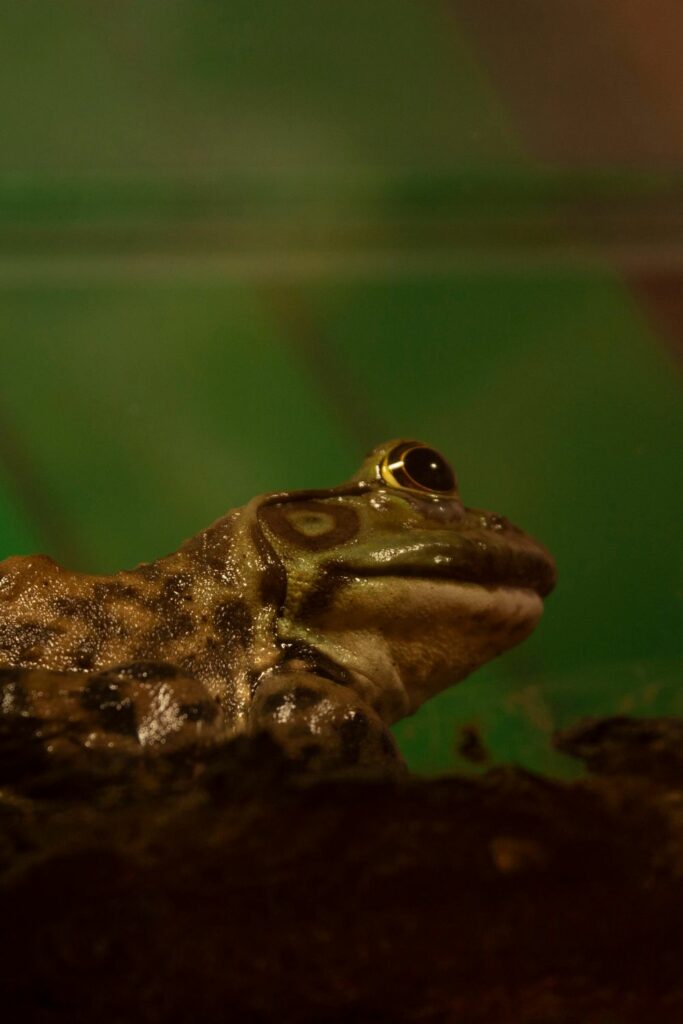
If you’re enamored by the unique allure of Pacman frogs and wish to keep multiple individuals, there are ways to do so responsibly and with their best interests in mind.
While cohabitation in the same enclosure is fraught with risks, there are strategies to ensure each frog enjoys a happy, healthy life.
Recommendations for Separate Tanks or Enclosures
Individual Spaces
Dedicate a separate tank or enclosure for each Pacman frog. This ensures they have their territory, reducing aggressive behaviors rooted in territorial disputes.
Consistent Conditions
While the frogs should have separate spaces, strive to provide consistent living conditions across all tanks, from temperature to humidity, ensuring each frog has an optimal environment.
Barrier View
Pacman frogs can become stressed even by the sight of another frog. Consider using barriers or opaque dividers between tanks, especially if they are placed close to one another.
Regular Maintenance
Just because they are in separate tanks doesn’t mean maintenance can slack. Regular cleaning, water changes, and substrate replacement are crucial for each enclosure.
Benefits of Individual Housing
Easier Health Monitoring
With each frog in its own space, it becomes simpler to observe them and detect early signs of illnesses or distress. Regular observations can help spot changes in behavior, appetite, or physical appearance.
Personalized Care
Individual housing means that each frog’s environment can be adjusted based on its specific needs. Some might prefer a slightly warmer or cooler temperature, or they might have different dietary preferences. Separate tanks allow for these nuances in care.
Stress Reduction
As solitary creatures, Pacman frogs thrive when they have their territory without the constant threat of another frog nearby. This reduces stress, leading to a healthier and potentially longer life.
In conclusion, while the charm of Pacman frogs might tempt one into housing multiples together, the best approach for their well-being is individual enclosures.
By respecting their solitary nature and providing dedicated care for each, you can enjoy the company of multiple Pacman frogs while ensuring they lead content, healthy lives.





